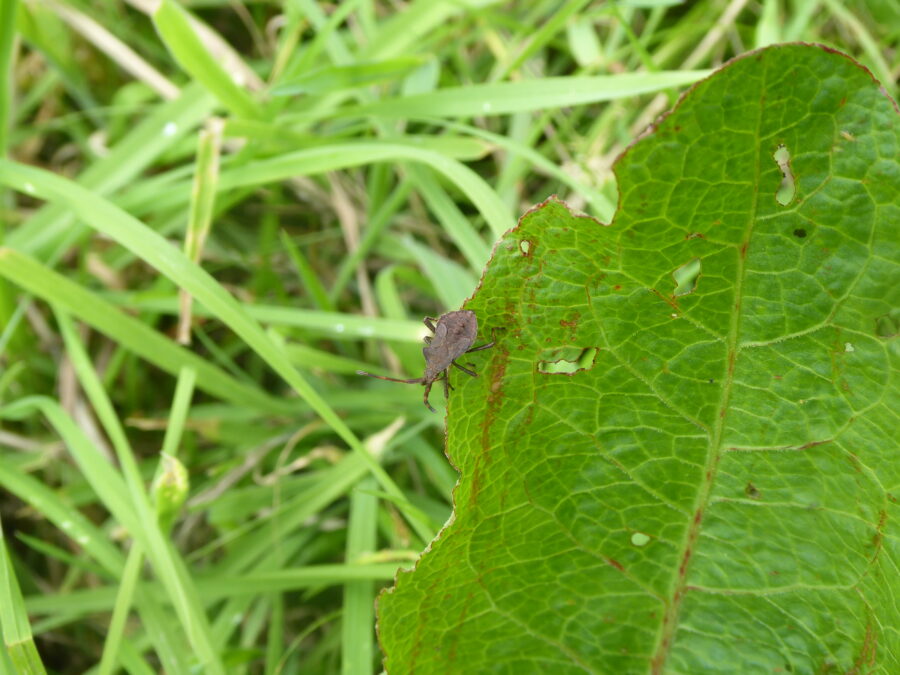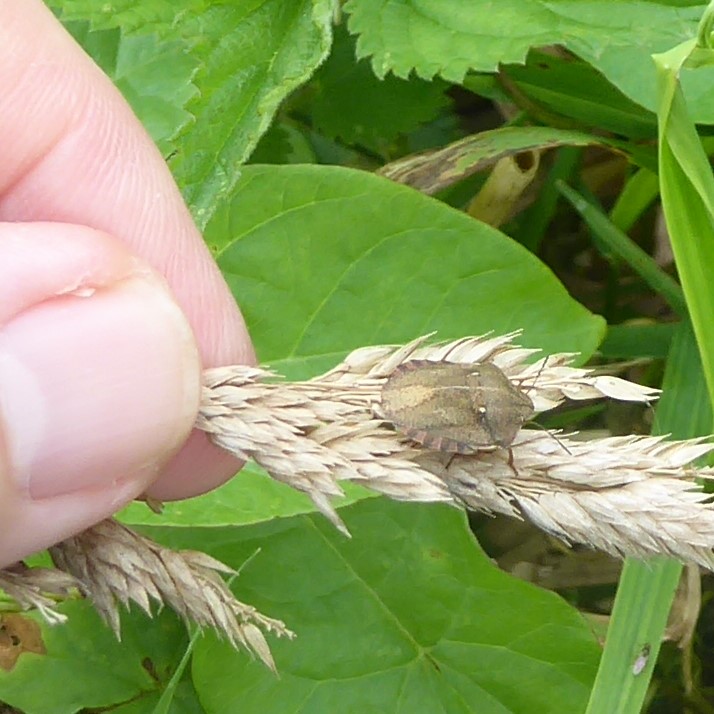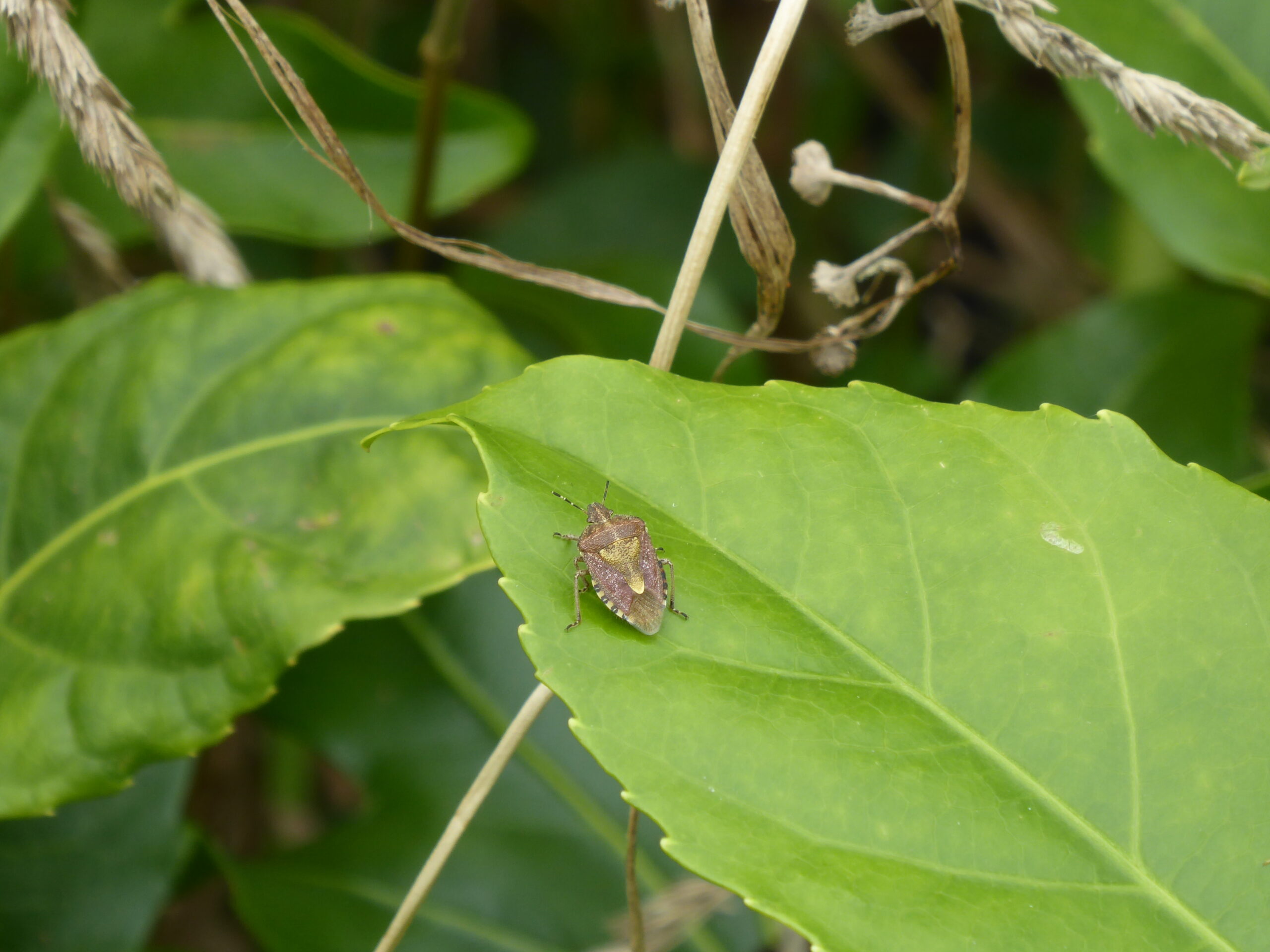This is the Hairy Shield Bug (Dolycoris baccarum). It has very striking markings and is slightly hairy if you zoom in. New adults emerge from August, and it overwinters as an adult becoming a dull brown colour during that time. It is widespread and can be found in hedgerows and woodland edges. This one was under the willow trees on the left-hand side of the garden.

Google lens told me that this was a dock bug, but it didn’t look like some of the pictures. Then I found a helpful diagram (www.ukwildlife.net) that showed the different stages of development and discovered that this is the final instar of a dock bug.
What is an instar? It’s the term used to describe the stages between moults of the larvae until the final adult emerges. The last stage of juvenile dock bug has small wings and a scaley body visible. The adults have larger wings that overlap their broad scaley body and broad shoulders that look armoured. They lay eggs in the spring. The first instar is red and black and looks quite cute and there are at least four stages of instar, before the adult dock bug emerges from August. Dock bugs don’t mind damp or dry habitat as long as there are docks or related plants for them to munch on.

This is a tortoise bug – another shield bug. It’s different from the hairy shield bug as it is broader and flatter and has two white dots on its ‘shoulders’. The goblet marking is much slimmer and draws into a line up its back. This is the adult. The juveniles have more patterning.
There are two types of tortoise bug, but they are very difficult to distinguish so the Latin name reflects this – Eurygaster cf testudinaria – where cf means ‘likely to be’. The other tortoise bug is the much rarer Eurygaster maura.
It is found in damp and dry grasslands and is currently widespread in southern England, though it used to be uncommon.
